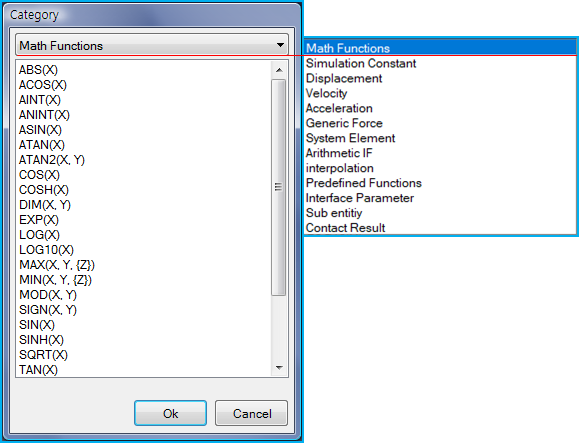As shown in the figure below, properties such as Name, Formula, Interface, Symmetric and so on can be defined in the Function Expression sub-entity window. General Sub-Entity Properties have been introduced in Figure 8.18: General properties of sub-entity pages and toolbar and the special properties are defined in the table below.
Figure 8.38: Function Expression properties
| Parameter | Symbol | Description | Dimension (Range) |
| 1. | N/A | Duplicate the selected entity. This option is activated when all fields of the entity are selected. | N/A |
| 2. Formula | N/A | Use to display the user-defined formulation in the formula window. The resultant value of the formulation is of the real type. |
N/A (Real) |
| 3. Interface | N/A | Enable use of the interface option. If this option is selected, the function expression can be defined as an Interface. | N/A |
| 4. P.I. | N/A | Use to set the performance index for DOE. See Performance Index. | N/A |
| 5. Formula window | N/A | Use to define a formulation. The formulation can be expressed
with constant values, several operators, arguments, and Intrinsic Functions in a Function Expression. Operators such as
+, -, *, /,
and () are available in this window. Usage follows
Python syntax. Arguments can be referenced using the argument
name. As shown in Figure 8.37: Function Expression sub-entity window (above),
p1, p2 and p3 refer to
the arguments in the argument list. |
N/A (Real) |
6.  | N/A | Use to open or close the argument window. | N/A |
7.  | N/A | Use to open the category dialog which contains Intrinsic Functions in a Function Expression as shown in Figure 8.39: Intrinsic functions in a Function Expression (below). | N/A |
| 8. Argument window | N/A | Use to define the argument. The No refers to ID of
the argument. The Name refers to the
name to be used in the function expression. This can be modified
by double-clicking the tab. The default values are
| N/A |




